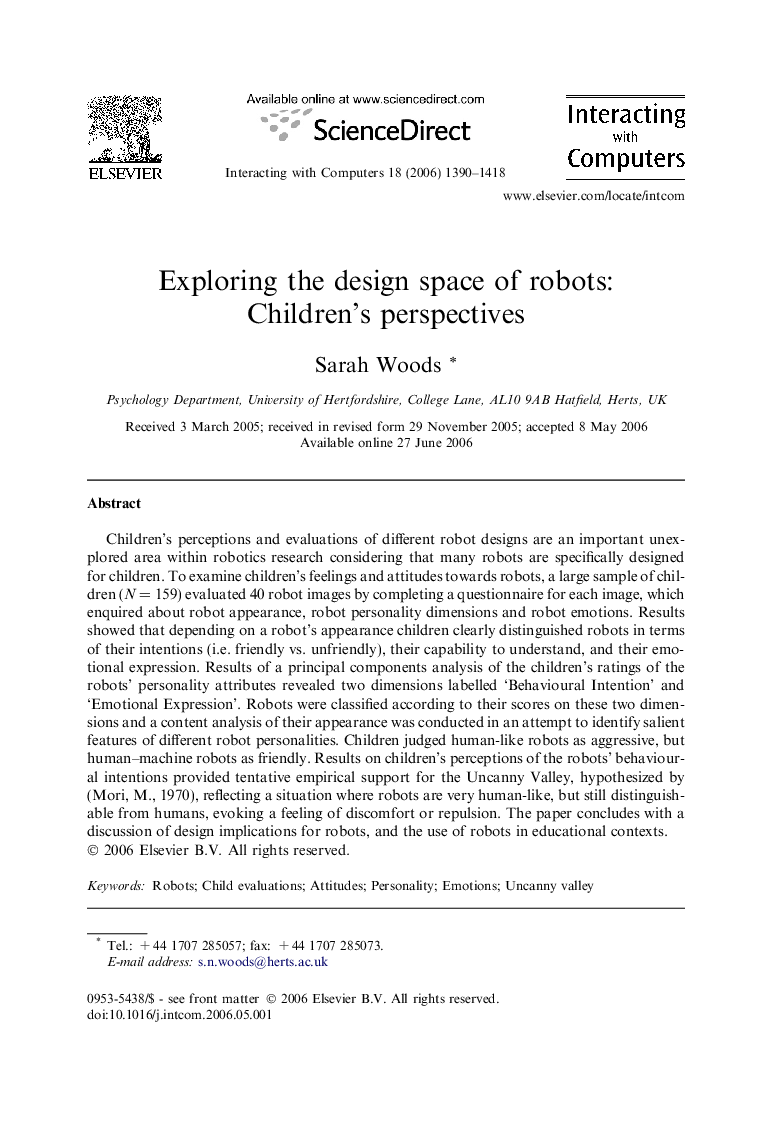| کد مقاله | کد نشریه | سال انتشار | مقاله انگلیسی | نسخه تمام متن |
|---|---|---|---|---|
| 551907 | 1450796 | 2006 | 29 صفحه PDF | دانلود رایگان |

Children's perceptions and evaluations of different robot designs are an important unexplored area within robotics research considering that many robots are specifically designed for children. To examine children's feelings and attitudes towards robots, a large sample of children (N = 159) evaluated 40 robot images by completing a questionnaire for each image, which enquired about robot appearance, robot personality dimensions and robot emotions. Results showed that depending on a robot's appearance children clearly distinguished robots in terms of their intentions (i.e. friendly vs. unfriendly), their capability to understand, and their emotional expression. Results of a principal components analysis of the children's ratings of the robots' personality attributes revealed two dimensions labelled ‘Behavioural Intention’ and ‘Emotional Expression’. Robots were classified according to their scores on these two dimensions and a content analysis of their appearance was conducted in an attempt to identify salient features of different robot personalities. Children judged human-like robots as aggressive, but human–machine robots as friendly. Results on children's perceptions of the robots' behavioural intentions provided tentative empirical support for the Uncanny Valley, hypothesized by (Mori, M., 1970), reflecting a situation where robots are very human-like, but still distinguishable from humans, evoking a feeling of discomfort or repulsion. The paper concludes with a discussion of design implications for robots, and the use of robots in educational contexts.
Journal: Interacting with Computers - Volume 18, Issue 6, December 2006, Pages 1390–1418